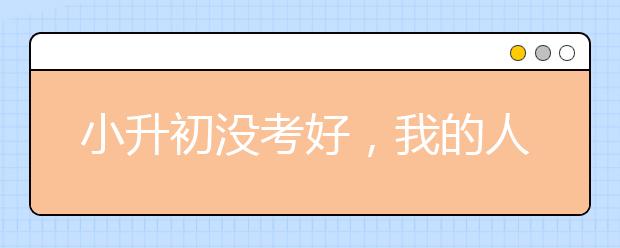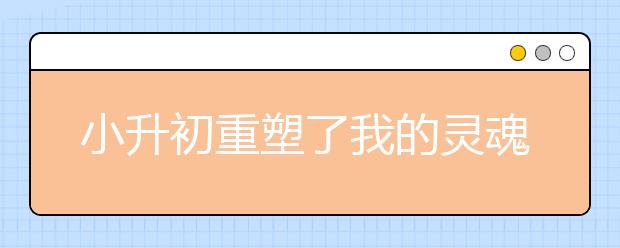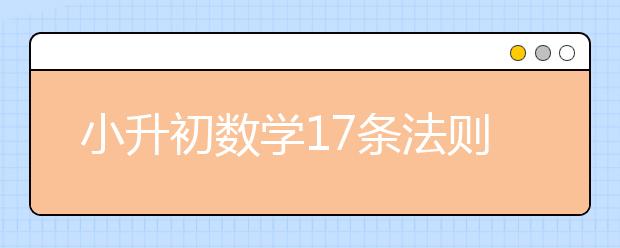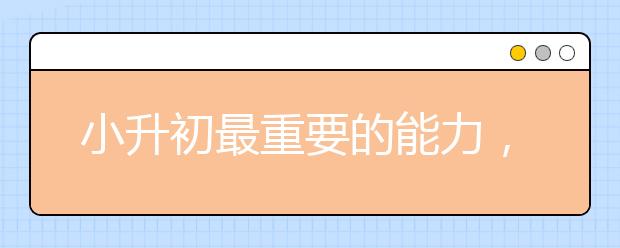小编今天整理了一些雅思阅读熟词多义题解析 【雅思阅读翻译】C4T1P3——视觉符号与盲人 剑桥雅思4 Test2的阅读是不是很难相关内容,希望能够帮到大家。

英语中纯粹的单义词很少,绝大多数词都是多义词,即一个词项有两个或两个以上的意义。在雅思阅读中,有很多词汇看似很简单,很熟悉,殊不知他有多个意思。把小伙伴们都迷得晕头转向的。今天我来为大家收集整理了雅思阅读熟词多义题解析,希望小伙伴们在雅思考试时能提高警惕,不再犯迷糊!
以下主要就雅思阅读剑桥真题部分的一些存在熟词多义的题目进行解析:
1.drive
C4T1P1:
In other words, they gave no indication of an appreciation of either the range of ways in which rainforests are important or the complex social, economic and political factors which drive the activities which are destroying the rainforests.
这是一个复杂的长难句,一共出现了三处定语从句,一处ways in which, 一处factors which,一处activities which。
drive的主语为连接代词which代指的先行词factors,提取之后变为factors drive the activities, 这里如果将这里作为动词的drive 翻译成驾驶,句子是完成不通顺的,我们从后一处的定语从句中得知,activities指的是破坏雨林的行为,也就是前面的社会经济和政治因素drive了一些破坏雨林的行为,也就是说,这里的drive是导致,迫使的意思。
C6T1P2
选项型SUMMARY
Q24: Manufacturers of computers, for instance, are able to import 24................. from overseas, rather than having to rely on a local supplier.
文章E段 To see how this influences trade, consider the business of making disk drives for computers. Most of the world's disk-drive manufacturing is concentrated in South-east Asia. This is possible only because disk drives, while valuable, are *all and light and so cost little to ship. Computer manufacturers in Japan or Texas will not face hugely bigger freight bills if they import drives from Singapore rather than purchasing them on the domestic market.
通过manufacturers of computers定位到E段。阅读后我们可以知道电脑*商集中在东南亚*和进口disk drives而不是本国市场。如果同学对电脑知识比较了解的话,对于drive在这里的理解应该问题不大。根据一定的语法知识我们看得出这里的disk drives和disk-drive是名词用法,可通过drive的基本含义“驾驶”进一步引申理解,“驾驶磁盘”过渡为“让磁盘启动”,正确的理解含义为:磁盘驱动器。对应到题目提供的选项“B. components”
2.subject
我们知道它由“科目”的意思,词汇稍好的同学还会知道它还有“主语”和“主题”的含义。我们来看下面一题:
C5T1P2
单选题 Q20 The teacher-subjects were told that they were testing whether
A a 450-volt shock was dangerous.
B punishment helps learning.
C the pupils were honest.
D they were suited to teaching.
文章A段 Specifically, Milgram told each volunteer 'teacher-subject' that the experiment was in the noble cause of education, and was designed to test whether or not punishing pupils for their mistakes would have a positive effect on the pupils' ability to learn.
文章这里的'teacher-subject'打了引号,也就是说即便同学你不认识,把它当作一个特殊词符号,不理解不影响做题。不过明显的是,把“科目”“主语”“主题”放这里,都不好理解。在雅思阅读学术实验类的文章中,subject是个高频词汇,作为“实验对象”的含义来使用, 有时会同义替换为volunteer或participant。
C8T1P3
表格填空Q38 The results were then subjected to a 38…………………….
文章:In 1987, results from hundreds of autoganzfeld tests were studied by Honorton in a 'meta-*ysis', a statistical technique for finding the overall results from a set of studies.
通过冠词a我们可以知道此空填名词单数,并且从表格纵轴同行的特殊定位词in 1987,我们找到了定位句。但是定位句中存在冠词a的三处,到底三处后的单词填哪个呢。单词不会,语法来凑,通过题目和文章的主干结构的一致性:A be subjected to B和A be studied By B in C, 由于Honorton是人名且不符合填词规定,顺理成章的'meta-*ysis'成为我们的选填对象。那subject to到底什么意思呢,通过文章,我们可以知道大概是被研究的意思,查了字典我们就了解,正确含义为“受…支配”。
类似的用法单词还有:
1. state n. (美国的)州,状态,*,adj. 国家的,国立的 v.陈述,说明
C8T4P1 判断题Q8 Private schools in Japan are more modern and spacious than state-run lower secondary schools. State-run adj国立的
C7T4P1 第5段 There was a huge initial force- five times larger than the steady state force, Gharib says. State n.状态
2. coin n. 硬币, v. 创造,铸造
C7T1P1 E段 The American zoologist Donald Griffin, who was largely responsible for the discovery of sonar in bats, coined the term 'echolocation' to cover both sonar and radar, whether used by animals or by human instruments. Coin v 创造(first used)
3. spoke v. speak过去式,n 车轮的辐条(C4T1P3)
4. tuitionn. 学费,课程,讲授,教学(C4T1P1)
5. complaint n. 抱怨,*,疾病(C4T2P2)
6. Interest v. 是感兴趣n. 兴趣,利益,利息(C4T3P1)
7. leaves v. leave的动词三单形式 n.叶子(Pl)(C8T4P3)
8. press v. 按压,n. 印刷,新闻工作者,新闻(C5T1P3/C5T4P2)
(pressing adj. 迫切的,急切的 C7T1P2)
希望以上内容能对大家有所帮助!我预祝大家在雅思阅读考试中能够取得理想的成绩!更多信息敬请关注雅思频道!
以上就是大学路小编为大家带来的内容了,想要了解更多相关信息,请关注大学路。
 全面禁止课外辅导机构?别误解了,要整顿的是这类培训班
全面禁止课外辅导机构?别误解了,要整顿的是这类培训班
现在的家长压力普遍很大,在升学的压力下不得不把孩子送去各类的辅导机构。为此,有家长呼吁:要全面禁止课
2021年08月03日 11:56 课外辅导真的能提高孩子高考成绩吗?
课外辅导真的能提高孩子高考成绩吗?
课外报班,每个家长心里都有自己的想法:“我家孩子数学不行,是不是得补补啊?”又或是“别的孩子都报辅导
2019年11月11日 22:18 中国父母在子女课外辅导上花了多少钱
中国父母在子女课外辅导上花了多少钱
课外辅导是一种较为常见的课外学习活动,也是一种组织化的校外活动形式。特别是在中国的基础教育阶段,学校
2019年11月11日 22:19 全面禁止课外辅导机构,你支持吗?
全面禁止课外辅导机构,你支持吗?
有人说,校外培训机构是校内教育的完善和补充,然而也造成学生更多的学习压力和家长们的经济负担。社会上一
2019年11月11日 22:13 深度解读:课外辅导1对1,在线课,小班课,大班课,家长该如何选择?
深度解读:课外辅导1对1,在线课,小班课,大班课,家长该如何选择?
其实这是一个系统性问题,家长由于大部分只有一个孩子,经验非常有限,也不做教育方面的研究,所以很多时候
2019年11月11日 22:08 我们为什么选择课外辅导?
我们为什么选择课外辅导?
教育培训行业,在我的认知里是从2010年1月29日开始的。那时我刚刚进入新东方天津学校。面试、试讲、
2019年11月11日 22:00 小升初没考好,我的人生好像完蛋了
小升初没考好,我的人生好像完蛋了
打开大学录取通知书,是高考考生们梦想成真的瞬间。同样的,在大洋彼岸的小岛国新加坡,每一年也有一群又一
2019年11月12日 13:14 小升初重塑了我的灵魂,还有肉体
小升初重塑了我的灵魂,还有肉体
不经历一次小升初,我还以为九年义务教育没我啥事。小升初让我明白,家长需要经历的最严峻的义务可能来了,
2019年11月12日 13:05 小升初数学17条法则,做题一定会用到!
小升初数学17条法则,做题一定会用到!
有很多家长们反应说,不知道为什么孩子对一些数学法则总是张冠李戴很是让人头疼,总是感觉是因为太调皮,所
2019年11月12日 13:02 小升初最重要的能力,现在开始准备一点也不晚!
小升初最重要的能力,现在开始准备一点也不晚!
今日寄语"让孩子爱上阅读,必将成为你这一生最划算的教育投资"——毕淑敏前段时间看
2019年11月12日 12:59
教育部:推动有条件的地方优化学前教育班额和生师比
时间:2024年11月12日
教育部:严格幼儿园教师资质条件,把好教师入口关
时间:2024年11月12日
教育部:教职工存在师德师风问题、侵害幼儿权益要依法严肃追究责任
时间:2024年11月12日
教育部:教师存在师德师风问题,损害幼儿身心健康的,要依法追究责任
时间:2024年11月12日
教育部:2023年全国普惠性幼儿园覆盖率达90.8%
时间:2024年11月12日
河北2024年3月出国留学雅思考试时间安排
时间:2024年02月18日
四川2024年3月出国留学雅思考试时间安排
时间:2024年02月18日
江苏2024年2月出国留学雅思考试时间安排
时间:2024年01月27日
雅思考试写作考试语法常见错误有哪些?
时间:2024年01月26日
雅思零基础该如何学习语法?
时间:2024年01月26日